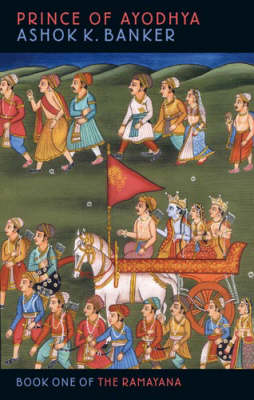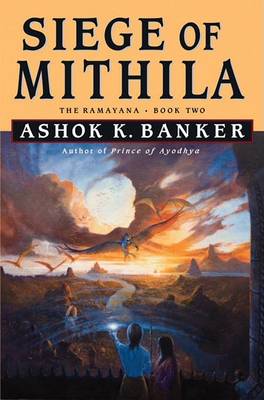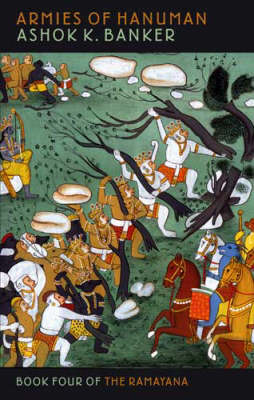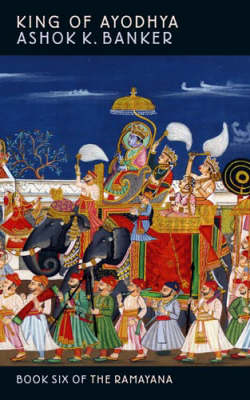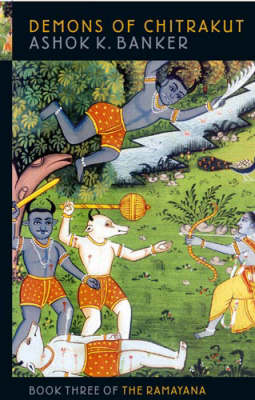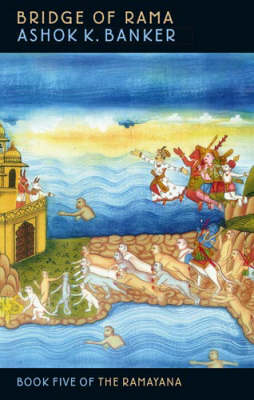Ramayana
2 primary works • 6 total works
Book 1
The original Ramayana was written three thousand years ago by a reformed thief-turned-sage named Valmiki. Now, with breathtaking imagination and brilliant storytelling, Indian writer Ashok K. Banker has recreated this epic for modern readers everywhere. Ayodhya the Unconquerable: legendary capital of warriors and seers. Never invaded, never defeated, greatest fortress of the civilised world. Soon it will be a wasteland of ashes and blood. For Ayodhya lies in the shadow of a demon's wrath, a demon that even the gods fear, a demon that even now is sending all its dreadful power to ravage the world of mortals. And only Rama, Prince of Ayodhya, can hope to prevent the onslaught of darkness and halt the demon invasion. But Rama will not fight alone. The sword of his brother will shield him, the wisdom of a seer will guide him...but in the final battle it will be Rama's courage alone that will save or damn Ayodhya.
Book 2
In PRINCE OF AYODHYA, Ashok K. Banker told of the terrifying prophecy that doomed a city and the heroes that fought to preserve their homes. Drawing on the epic Indian saga of the Ramayana for inspiration, he has brought one of history's greatest works to a global audience. Now SIEGE OF MITHILA continues the story of the heroes of the Ramayana. The prophecy of annihilation has been made and events are moving to their inexorable conclusion. The fate of the world hangs in the balance and the slightest mistake will lead to the certain destruction of all ...The original Ramayana was written in Sanskrit by a reformed thief-turned-sage named Valmiki, possibly as long ago as 2,000 B.C. For more information on Ashok K. Banker, visit our website at www.orbitbooks.co.uk
The original Ramayana was written three thousand years ago. Now, with breathtaking imagination and brilliant storytelling, Indian writer Ashok K. Banker has recreated this epic tale for modern readers everywhere. For thirteen long years, Rama and his companions in exile have defended themselves against the brutal incursions of the rakshasas of the wilderness. Finally, in the bitter battle of Janasthana, he achieves the long-sought victory, and retires to the sun-dappled glades of Panchvati to wait out the last months of his exile. But unknown to Rama, the demoness Supanakha has survived and escaped - back to the hellish island-kingdom of Lanka. There, she provides the key to resurrect her stricken cousin Ravana, lord of the rakshasas. And the resurrected Ravana seeks only one thing: vengeance against Rama ...
Rama, king in waiting, has crossed the ocean and the great war has begun. Ravana, lord of demons, unleashes terrible sorcery to deal a crushing blow to Rama's forces. Before they can recover, he sends forth a legion of warbred rakshasas more terrible than any seen before, and the soil of Lanka runs red with the blood of Rama's warriors. Still, the brave vanars and bears rally and fight on despite the formidable odds. The war descends into a brutal maelstorm as champions die and heroes sacrifice their lives for Rama's cause. And then Ravana commits the most dreaded act of all: rather than surrender Sita, he executes her before Rama's eyes. On this darkest day, it hardly seems to matter that Rama's exile is ended, and he is now free to return to his homeland to claim his rightful place as ...King of Ayodhya. The original Ramayana was written in Sanskrit by a reformed thief-turned-sage named Valmiki, possibly as long ago as 2,000 B.C.
Rama has quelled the demon invasion. He has thwarted the demonlord Ravana. And he is wedded to the enchanting Sita. But the young prince's problems are far from over. For Rama has been challenged by the fabled axe-wielding brahmin Parshurama - a warrior of such power he has never been defeated. And should he survive the confrontation, a greater crisis awaits him. Accompanied by his beloved Sita and loyal brother Lakshman, the prince must travel deep into the heart of the dread forest of Dandaka-van. There he will be pitted against the vengeful survivors of Ravana's rakshasa hordes. And in the tiny outlaw settlement of Chitrakut, surrounded by blood-thirsty demons, he must prepare to face fourteen long hard years of exile. The original Ramayana was written in Sanskrit by a reformed thief-turned-sage named Valmiki, possibly as long ago as 2,000 B.C.
Hapless Sita is the prisoner of the king of rakshasas, Ravana. To win her back, Rama and his loyal vanar friend Hanuman have assembled a vast army. Desperate, and using only their wits and their bare hands, they must build a rock bridge across the ocean to reach Lanka. Even as they toil, Sita is sentenced to death by her captors. Her only hope now lies with Hanuman. Meanwhile, Hanuman discovers the shocking secret of his true identity, and his faith in Rama triggers extraordinary new powers. He is quickly despatched to Lanka, to the homeland of the rakshasa demon race, in one final attempt to rescue Rama's beloved and to prevent a terrible, tragic war. The original Ramayana was written in Sanskrit by a reformed thief-turned-sage named Valmiki, possibly as long ago as 2,000 B.C.
